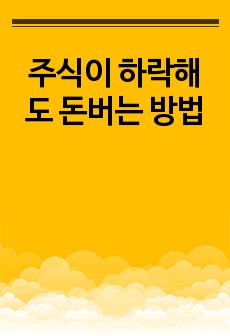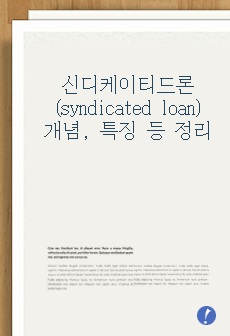BRAND AUTHENTICITY AND CORPORATE MUSEUMS: AN EXPLORATIVE RESEARCH OF GUCCI MUSEUM
* 본 문서는 배포용으로 복사 및 편집이 불가합니다.
서지정보
ㆍ발행기관 : 글로벌지식마케팅경영학회(GFMC)
ㆍ수록지정보 : GFMC Session1
ㆍ저자명 : Giuseppe Bertoli, Bruno Busacca, Maria Carmela Ostillio, Silvia Di Vito
ㆍ저자명 : Giuseppe Bertoli, Bruno Busacca, Maria Carmela Ostillio, Silvia Di Vito
영어 초록
Among the current trends that set the social and cultural scenario pertinent to marketing, the search for authenticity by consumers has taken the highlights, to the point that it is considered “one of the cornerstones of contemporary marketing” (Brown et al. 2003, p. 21).This trend is normally interpreted as a reaction to the traits of current post modern society, characterized by hyper materialism, globalization, virtualization and commercialization of experiences (Arnould e Price 2000). In this context, individuals turn with growing interest towards what is “genuine”, “real” , “faithful to the original” or “of undisputed origins” (Boyle 2004).In our paper we propose, under a consumer-based perspective, to explore the role played by corporate museums in the search for authenticity by individuals.
Based upon this, the museum -- in the quality of “ bearer” of the corporate identity and image -- would consent to offer its visitors a holistic view of the brand’s original culture and values, in a synthesis that integrates past and present. From this point of view, the experience offered to visitors would reinforce their connection to the brand (Mitchell e Mitchell 2001), consolidating their involvement and loyalty towards it (Mitchell e Orwing 2002).
The corporate museum would therefore arise as a vehicle to create and consolidate a profound relationship between brand and consumers. However, only a few of the research efforts sustained so far have tried to explore empirically the museum’s potential as a platform to enrich and strengthen brand authenticity. Our attention is focused on a museum created by a well known luxury brand (Gucci Museum, located in Florence) for the purpose of investigating its role as a tool for authentication, capable of strategically connecting past, present and future. After a synthetic literature review and a brief introduction of the museum under research, the methodology of the explorative research will be explained and finally, the main results obtained will be presented.
Literature review
According to Beverland (2009, p. 16), brand authenticity must be interpreted as “subjective, socially constructed, and given to an object by consumers, marketers and others”. Overcoming the modernist concept, authenticity is redirected towards individual valuations that are socially negotiated, more than towards objective attributes (Beverland e Farrelly 2010). The extant literature has identified the multidimensional and multi attribute aspect of the construct.
In regards to the former aspect, the seminal work of Beverland (2005), theoretically identifies three dimensions that are conceptually relevant for brand authenticity:
- objective, connected to the object and its artistic, historical or qualitative veracity;
- subjective, deriving from the individual attribution of an authentic status to the objects, understood as expressive of formal harmony, equilibrium or of a connection with a determined time and location;
- self expressive, connected to the genuine manifestation of individuality which is conveyed by the consumption of certain objects.
Once the multidimensional nature of the construct is ascertained, it is possible to outline the various attributes that define it (Beverland 2006; Gundlach e Neville 2012; Brown et al. 2012; Grayson, Radam, 2004; Napoli et al. 2014).
In view of the objective dimension, the perceptions of authenticity appear to be rooted in the brand’s tangible reality, which can be evaluated based on its observable characteristics: the corporate exponents; the geographical roots; the longevity; production characteristics; the product attributes.
As to the subjective dimension, a brand can be interpreted as authentic if it is capable of conveying certain associations. These may initially regard the connection of the brand with individual history, as well as its evolution over time (in terms of continuity of positioning, style, aesthetics and image coherence). Also, the commitment towards quality, which expresses the brand’s responsibility towards its own products and the promises conveyed to the market (credibility, reliability) come together to induce the image of authenticity. In the same direction, there are also several perceptions in operation which are connected to the brand’s peculiarities, such as originality, pioneering and exclusivity. Furthermore, brand authenticity is also fuelled by an ensemble of value associations, connected to the pursuit of non purely commercial objectives, to its genuine priority of artisanal objectives or, more generally, to its integrity, naturalness or sincerity.
Finally, for the self expressive dimension, brand authenticity may derive from its capacity to connect to the image and concept that customers have of themselves. The perception of authenticity can result from the fact that it suscitates in individuals sensations of self effectiveness, problem solving capabilities and therefore perceptions of having reached performance related objectives. A brand can then be understood as authentic also by its capacity to make consumers feel that they are part of a social or territorial community to which they feel linked. Furthermore, for people who attribute a particular value to moral principles, authenticity is associated to ideals and virtues which the brand continuously follows by means of ethical standards which allow individuals to feel truer to themselves.
In conclusion, brand authenticity can be interpreted as the result of the interaction between objective factors, subjective constructs and existentialist motivations. Beverland and Farrelly (2010) observe that consumers seek different forms of authenticity, based on their own personal objectives.
The understanding of how consumers associate a variety of authenticity attributes to brands and the ways in which those components reciprocally influence each other appears to be an extremely useful from the point of view of brand management. In fact, the brands that propose to refer to uniqueness in their strategies, must find leverage on the dimensions that are reputedly relevant for consumers and, for each one, identify the most critical attributes.
Research methodology
To investigate the capacity that brand museums of fashion luxury brands have to contribute towards the perception of brand authenticity, we conducted an esplorative research on the Gucci Museum’s visitors. The survey was held based on content analysis of the reviews posped on Tripadvisor by the visitors themselves.
The research was therefore based upon 79 reviews, heterogeneous in terms of the geographic provenance of the commentators, date of visit and overall evaluation. Of these, 45 were published in English, 26 in Italian, 4 in Portuguese, two in French and two in Russian. Considering the evaluation, that is the rating expressed by visitors on a scale of 1 to 5, the most part (77,22%) of comments expresses a medium-high rating (corresponding to ratings 4 and 5). Finally, more than half of the comments were published during the same month as the visit and less than 5% within the following six months or more.
Those reviews underwent a content analysis, a methodology considered appropriate in the extant literature (Pan et al. 2007; Banyai 2010; Volo 2010; Li e Wang 2011) for the purpose of investigating the perceptions, impressions and general feeling associated to a certain tourism destination, or a visitation experience.
Discussion
In trying to understand how the museum structure might add value to the brand’s meanings, in strengthening the perceptions of authenticity, we attempted to insert the brand authentication process into the broader museum visit experience, investigating how the brand’s authentication tools may have been influenced (positively and negatively) by the perceptions of authenticity of objects and experiences.
The Gucci Museum acquires a real museum legitimacy, standing on the same level as other Florentine cultural sites; it was interpreted as a memory site, where the brand’s history and fashion history are connected thanks to the remembrance of past events, people or periods, effectively “dignifying” the museum and the visit as a fundamental part of Florentine tourism. Some visitors “authenticate” corporate structures as true cultural institutions. As such, they are legitimized in the righteous pursuit of preserving and being custodians not only of brand history but also of the precious testimonials of Italian fashion.
Concerning the contents, that is, the objects displayed at the museum, several reviews attributed to these a real and proper museum aura, bearing artistic worth and interpreted as true masterworks. The process by which these visitors project their own perceptions of authenticity to the objects observed, seems to be tied as a conceptualization of constructivist nature to several elements that go from stylistic-aesthetic value and quality of the products, a result of knowledgeable artisanal mastery, to the refinement and creativity of the objects themselves. For some visitors, the objects collected in museums acquire authenticity in view of their antiquity and rarity. What is relevant is the indexical authenticity of objects.
It is conceivable that this process for the authentication of objects may be susceptible of influencing the brand image perceived by visitors. For some visitors, the products displayed in commercial venues acquire, by the end of the visit, an aura that brings them closer to museum pieces, expressive of the same creativity, artisanal mastery or symbolic connection with the past. The same visit to the maison’s points of sale is lived by some as an occasion to observe up close the brand’s masterworks, showcased but distant and untouchable during the museum visit.
Most reviews, when describing the museum visit, made reference not so much to impressions and evaluations regarding the museum structure or the objects it contains, but instead, to the visiting experience as a whole. For these reviewers, the corporate museum represents a platform on which to experiment authentic moments. From this viewpoint, the notion of existential authenticity seems more relevant than the authenticity of the objects, as postulated in a post modern approach.
In reference to the dimensions of authenticity that can be imbued in an experience, it was possible to conceptualize the role of the corporate museum as a vector for the experimentation of different types of authentic experiences.
In the first place, the corporate museum – thanks to its setting and content displayed – was identified as a medium capable of conveying a surreal experience. As such, it allows an authentic experience from the intrapersonal point of view, offering the opportunity for immersion into an atmosphere, a world far from reality, feeling transported into the past or into a world of imagery, thus departing from the commonplace.
The museum was also understood as an occasion to live an evasive experience in regards to traditional Florentine museums..
Finally, the museum visit is lived by some as an opportunity to consolidate existing personal connections and/or to establish new ones. Deepening the analysis, it is possible to verify that the exhibition spaces are interpreted as a frame for the consolidation of personal relations with the individuals that share the visit experience. The visit to the museum distinguishes itself because it is a collective experience, an opportunity to spend time with other people that allows for the sharing of common passions towards the brand and its history.
참고 자료
없음"GFMC Session1"의 다른 논문
 FAST AND SLOW FASHION BRANDS IN DEVELOPING SUSTAINABLE ..6페이지
FAST AND SLOW FASHION BRANDS IN DEVELOPING SUSTAINABLE ..6페이지 “WHAT IF A CELEBRITY AND A BRAND CO-CREATE A NEW COLLEC..7페이지
“WHAT IF A CELEBRITY AND A BRAND CO-CREATE A NEW COLLEC..7페이지 THE INSTAGRAM’S STRATEGY IN ENGAGING THE CUSTOMER’S LOY..3페이지
THE INSTAGRAM’S STRATEGY IN ENGAGING THE CUSTOMER’S LOY..3페이지 THE PARTICULARITIES OF NEW PRODUCT DEVELOPMENT IN THE T..5페이지
THE PARTICULARITIES OF NEW PRODUCT DEVELOPMENT IN THE T..5페이지 THE LONE CHOCOLATE BAR: THE INFLUENCE OF PERCEIVED SCAR..6페이지
THE LONE CHOCOLATE BAR: THE INFLUENCE OF PERCEIVED SCAR..6페이지 ADS AS WORKS OF ART: MEASURING ADVERTISING IMMERSION3페이지
ADS AS WORKS OF ART: MEASURING ADVERTISING IMMERSION3페이지 ECONOMIES OF SMALL: NICHE STRATEGIES AND SUCCESS FACTOR..8페이지
ECONOMIES OF SMALL: NICHE STRATEGIES AND SUCCESS FACTOR..8페이지 THE INFLUENCE OF ONLINE CUSTOMER REVIEWS ON RETAILERS' ..6페이지
THE INFLUENCE OF ONLINE CUSTOMER REVIEWS ON RETAILERS' ..6페이지 IS THE ARTIFICATION PROCESS PERCEIVED BY FINAL CONSUMER..6페이지
IS THE ARTIFICATION PROCESS PERCEIVED BY FINAL CONSUMER..6페이지 THE ODD EVEN PRICE PARADOX IN THE FASHION LUXURY SECTOR6페이지
THE ODD EVEN PRICE PARADOX IN THE FASHION LUXURY SECTOR6페이지

























